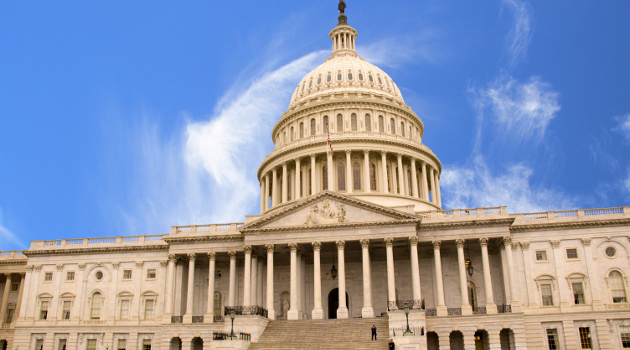In early November, I reviewed the House’s tax plan and the Senate’s tax plan.
I was grading on a curve. I wasn’t expecting or hoping  for something really bold like a flat tax.
for something really bold like a flat tax.
Instead, I simply put forward a wish list of a few incremental reforms that would make an awful tax system somewhat less punitive.
A few things to make April 15 more bearable.
Some changes that would give the economy a chance to grow faster and create more jobs so that living standards could improve. Is that asking too much?
It wasn’t even a long list. Just two primary goals.
- A lower corporate tax rate.
- Ending the deduction for state and local taxes.
And two secondary goals.
- Death tax repeal.
- Eliminate special tax preferences for green-energy.
Based on those items, I think House and Senate GOPers did a reasonably good job (at least compared to my low expectations earlier in the year).
Now let’s look at the agreement in principle (AiP) that was just announced by House and Senate negotiators and assign grades to the key provisions. And we’ll start by looking at the items on my wish list.
Is there a big reduction in the corporate tax rate?
Yes. The deal would slash the current 35 percent rate to 21 percent. That’s not as good as 20 percent, but it’s nonetheless a huge improvement that will result in more investment, higher wages, and enhanced competitiveness. And since other nations will face pressure to further reduce their rates, there will be global economic benefits. Final grade: A-
Is the deduction for state and local taxes abolished?
Not completely. The agreement does impose a $10,000 cap on the amount of that can be deducted. Combined with a doubling of the standard deduction, this will significantly reduce the number of people who “itemize.” As such, there will be more resistance to bad tax policy by state and local governments. Final grade: B+
Is the death tax repealed?
Not fully. The deal doubles the exempt amount to more than $10 million, which will protect many more families from this pernicious form of double taxation (and the ones who will still be impacted are the ones with greater ability to protect themselves, albeit at the cost of allocating their capital less efficiently). Final grade: B
Are special tax preferences for green energy wiped out?
No. This is a very disappointing feature of the agreement. I’m tempted to assign a failing grade, but that low mark should be reserved for provisions that actually are worse than current law. All that’s happening in the deal is that bad policy is being left in place. Final grade: C
A grade for everything else?
There are other provisions in the final deal that are worthy of attention. In most cases, lawmakers did move in the right direction when looking at the key principles of good tax reform (reducing tax rates, reducing double taxation, and reducing distortionary preferences). Final grade B
Here’s a partial list of the other provisions.
- There is a modest reduction in personal tax rates, including a reduction in the top rate on households from 39.6 percent to 37 percent. It’s always good to lower marginal tax rates, especially for high earners.
- The tax rate on pass-through businesses (i.e., smaller businesses that file personal tax returns rather than corporate returns) is indirectly reduced. This is good news, though it may lead to more complexity.
- Full expensing of business investment for next five years. This would be a very good reform if it was permanent, though even temporary expensing is positive
- The tax preference for housing is curtailed by allowing the write-off of interest only on mortgages up to $750,000. This is an improvement over current law, especially when combined with the higher standard deduction.
- The corporate alternative minimum tax is abolished. This is good news.
- The Obamacare individual mandate is repealed. This is good news, though it doesn’t solve the underlying problems with that law.
- The individual alternative minimum tax is curtailed. Repeal would have been better, but this is an improvement over current law.
I’ll close with a caveat. An AiP is not the same as final legislative language.  It’s not the same as votes for final passage in the House. Or the Senate. And it’s not the same as a presidential signature on a bill.
It’s not the same as votes for final passage in the House. Or the Senate. And it’s not the same as a presidential signature on a bill.
Aficianados of “public choice” are painfully aware that politicians and interest groups are depressingly clever about preserving their goodies. So while it seems like tax reform is going to happen, it’s not a done deal. When dealing with Washington, it’s wise to assume the worst.

